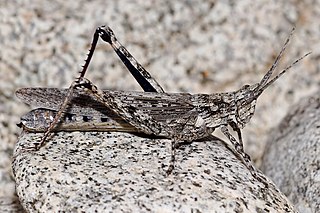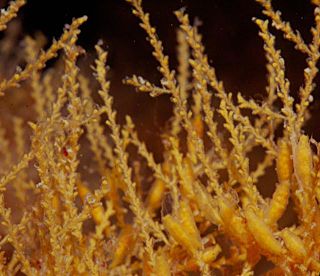
The Acrididae are the predominant family of grasshoppers, comprising some 10,000 of the 11,000 species of the entire suborder Caelifera. The Acrididae are best known because all locusts are of the Acrididae. The subfamily Oedipodinae is sometimes classified as a distinct family Oedipodidae in the superfamily Acridoidea. Acrididae grasshoppers are characterized by relatively short and stout antennae, and tympana on the side of the first abdominal segment.

Bougainvillia is a genus of hydroids in the family Bougainvilliidae in the class Hydrazoa. Members of the genus are characterised by having the marginal tentacles of their medusae arranged in four bundles. Some species are solitary and others are colonial but all are filter feeders. They are found in the Southern Ocean, having a circumpolar distribution, but some species also occur in the Northern Hemisphere, possibly travelling there as polyps on the hulls of ships.

Eudendrium is a large genus of hydroids (Hydrozoa), one of two in the family Eudendriidae. These animals are marine cnidarias in the family Eudendriidae.

Sertulariidae is a family of hydrozoans.

Thuiaria is a genus of hydroids in the family Sertulariidae.

Sertularella is a genus of hydroids in the family Sertulariidae.

Plumularia is a genus of hydrozoans in the family Plumulariidae.

Aglaophenia is a genus of hydrozoans in the family Aglaopheniidae.

Acryptolaria is a genus of hydrozoans in the family Lafoeidae.

Sertularia is a genus of hydroids in the family Sertulariidae.

Zygophylax is a genus of cnidarians belonging to the family Zygophylacidae.











